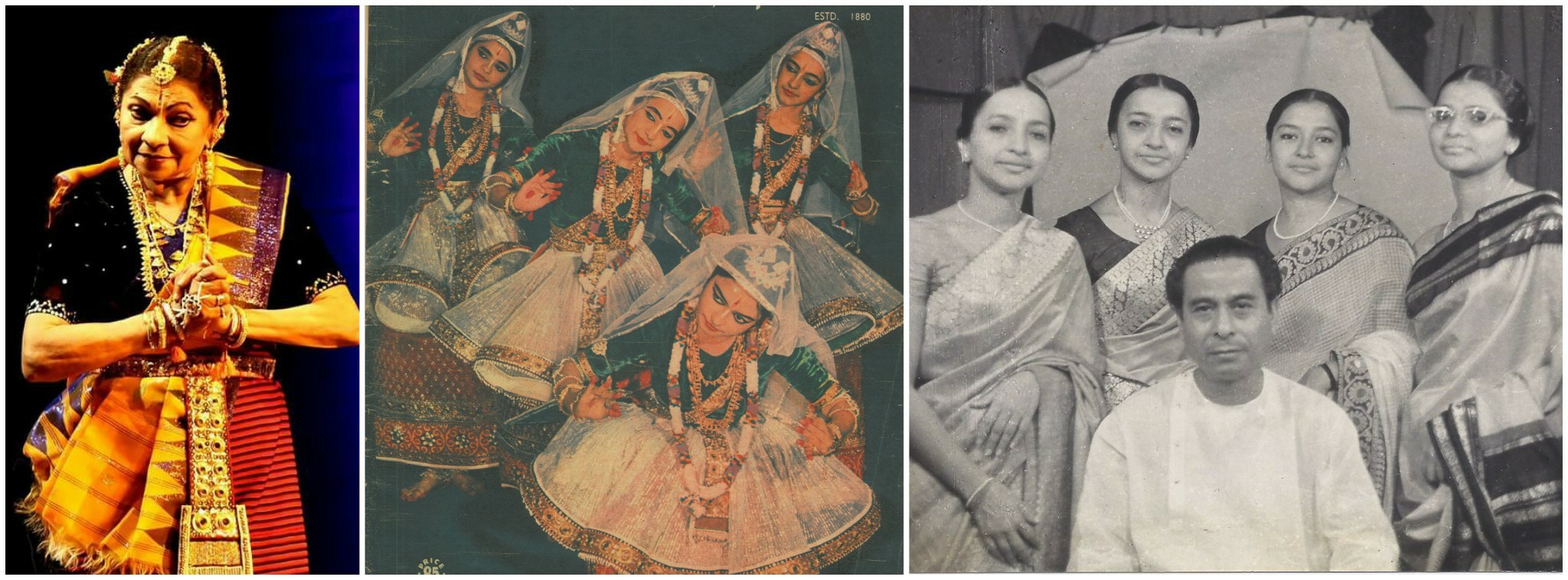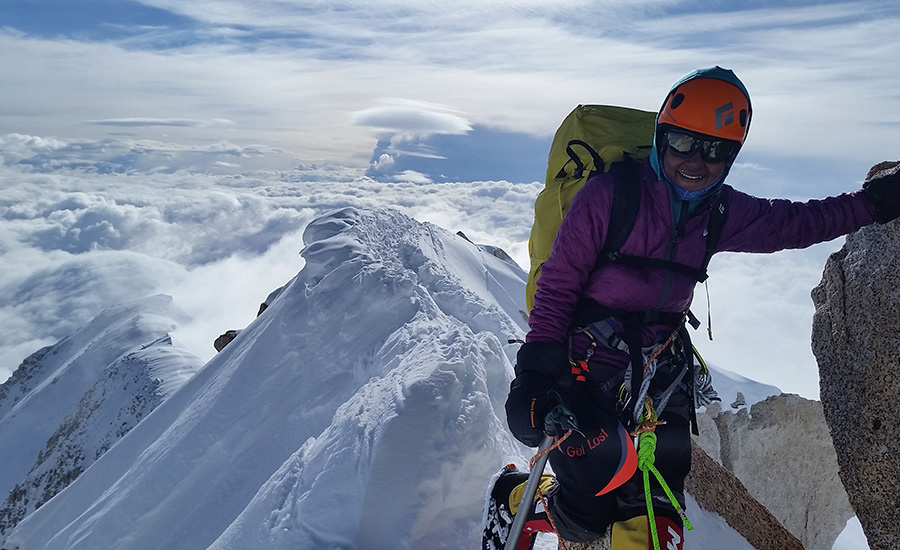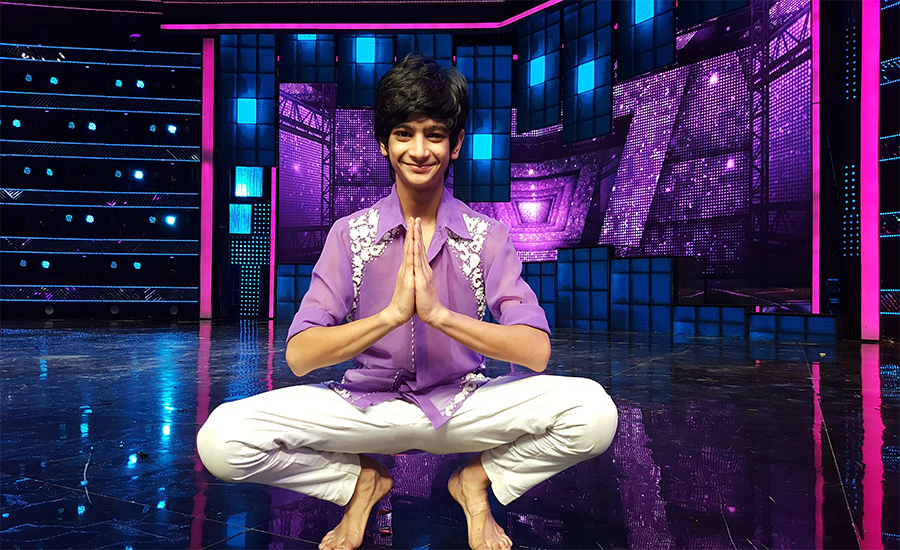

Padma Shri Dancer carrying the legacy for Manipuri dance since 1958 - The Classical story of Darshana Jhaveri
Known As
Darshana Jhaveri
Mother's Name
Vimla Jhaveri
Father's Name
Navneetlal Chunnilal Jhaveri
Birthday
9 th Jan 1939
Place from
Mumbai, Maharashtra
Proudly says ‘imd1’ for
Manipuri, Dance
It is a matter of pride to have such rich traditions and different art forms in our country and we are even more fortunate to have an epic artist who with her endurance, talent & dedication made us familiar with rich Indian dance culture. Padma Shri Darshana Jhaveri, a very respected and renowned dancer, researcher & teacher has carried forward the legend associated with Manipuri dance. Her grace, elegance and narration of a story in the dance form leave an enchanting impression. She is the youngest among her four sisters who have together performed on the stage. Jhaveri Sisters were the Founders of the Manipuri Nartanalaya which was established in 1972 to channelize their many fold activities since 1958 along with their Teacher Guru Bipin Singh and Kalavati Devi having centers in Mumbai, Kolkata & Manipur. She is a proficient dancer specialized in Tandava and Lasya elements of Manipuri dance and drum playing. Over the years she has performed nationally & internationally and received several honors. She has even led her contribution in writing articles, editing and written books related to Manipuri dance.
Team imd1 had a chat with her a few days ago, read on to know her further!
We are really keen to know, how did your journey begin?
The era of 1940’s was not only the struggling years for independence but also a revival period due to the freedom movement led by Mahatma Gandhi. He was encouraging youngsters to take up cultural activities related to Dance & Art. Society earlier had a conservative outlook towards letting their children learn & perform dance on stage. Whether boy or a girl, they were asked to withhold their interest. In 1920’s Rabindranath Tagore was highly impressed by Manipuri Raas Leela which he saw in Manipur and Tripura and so with his vision of bringing Dance & Music to higher platform, he laid the foundation for Shanti Niketan. He brought Gurus from Manipur and Kerala. Gujarati families accepted the change and the boys started learning Kathakali & girls Manipuri. So, Rabindranath Tagore was successful in altering the mindset of people. In 1943, Guruji used to come home to teach my sisters Nayana & Ranjana so Suverna and I too followed their footsteps. Manipuri dance is performed in every occasion right from birth of a child till death & traditionally it is performed for 8-10 hrs at a stretch in temples. I made several visits to Manipur fro study & research with Guruji and we collected & recorded the oral tradition from many gurus of Manipur. We studied the Vaishnavite Sangeet Shastras, correlated the oral tradition & established scientific tenants underlined the oral tradition. Taking root in it, Guruji composed and choreographed for the theatre. This has been the main work for 50 yrs to bring traditional and classical Manipuri Dance from temples to theatres and the challenging task and struggle which we took was of bringing 8 hours of performance within 2 hours without polluting its original form & spirit. During 40’s & 50’s, Guruji directed various dance dramas like Amrapali, Meera Bai, Chaula Devi & Narsaiyo. At that time, only two institutions Bhartiya Vidya Bhavan & INT (Indian National Theatre) promoted dance dramas. Guruji directed the Manipuri portion and my sister Nayana was Heroine in that Dance dramas. Earlier, people of Manipur were very conservative and difficult for them to accept our work. So I used to go with Guruji to Manipur to give explanations and demonstrations of our work to make them understand our attitude, intention and value of our work as how it is done in the tradition in Manipur and how we perform in theatre.
Beyond Dance
Favorite Personalities
Rukmini Devi
Inspirations
Swami Vivekananda & Rabindranath Tagore
Food I Love
All types of food especially Daal Bati, Khichdi, South Indian
Food I Hate
Oily & Spicy food
Had I not been a Dancer then…
Never thought of it
Like Vacations at
Hill Stations when I was young & my Dance career never took vacations
Favorite Pass time
Reading Philosophical topics, Books on yoga

What were the hardships & hurdles you encountered and how did you overcome them?
Things just fell in place. I never made any efforts as such. My parents were supportive and I had a perfect Guru. My parents especially father was broad minded, prophetic and interested in various Art forms. We used to invite guest who were performers from all over the world to our house. My parents appreciated all Art forms and met many great Artists. Our principal too was very progressive with his thoughts. Ravi Shankar Maharaj & Rukmini Devi were very close to our principal (New Era School) and appreciated our approach & work. As what Rukmini Devi did for Bharatanatyam, we did for Manipuri. She used to call us to ‘Kalakshetra’ for programs especially when they built up a new theatre. All credit goes to my parents. Though learning dance was very expensive. Still our father supported & encouraged us.
Do you think Dance and its learning’s can be helpful in life even if one does not want to consider it as a career goal?
When you learn dance, it starts becoming important part of your life. It makes one more aesthetic, kind, humble, and cordial. It cultivates your personality and changes your perception towards life. One becomes more discipline and a sense of happiness comes from within. Everything looks beautiful & worthy.
Who has been your influencer in your journey so far?
My sisters and Guru Bipin Singh have been the greatest influencers of my life Because of guruji we could reach so far. Watching my sisters dance, inspired me to take up the same art form. Guruji was a genius. Because of his insight in dance and scientific attitude he could take right inspiration from Raas Leela & Sankirtan, which are the two basic classical dance forms.
Which was “that” moment when you considered yourself as “I am the 1”?
This thought never came to us as we all four sisters are very humble & down-to-earth. We just believe in giving our best and rise to our own expectations. Respect & Love people give is the appreciation I value and don’t anticipate any accolades.
Is your success backed by a formal training?
Definitely, we have been trained finely by our Guruji and we have put in enumerable hours of practice & polish our art form. Manipuri requires the dancers to be graceful as it is very lyrical. It needs complete devotion. As it is done before Lord Krishna, Maharajas and other Royals, the costume covers your head also. The dance reflects one being humble and the movements are also introvert not outward or angular like Bharatanatyam; where they dance to impress the audience. In Manipuri though we dance in front of audience but spiritually we dance for ourselves & Lord Krishna. We are not allowed to have eye contact with the audience and the dance is less interactive. We are taught & expected to be more spiritual, humble & natural. The torso movement stays focused on the navel as it is the center of our body called as Manipura chakra. So, with every movement we concentrate on our naval. This concept is also having importance in yoga.
Could you reflect on the importance of systematic training in dance?
It’s very vital. I tell my students to watch other students & dancers how they perform and comprehend their scope of improvement. Nowadays, dancers have very less dedication and focus level. They hardly practice twice a week which is not sufficient. Long hours of practice & devotion are required to excel in any art form.
Are there any prerequisites like age, fitness or a particular type of mindset required to pursue Dance?
7 years is the ideal age to have right feet movements and grasping power, since one needs to have right control on body, eye, hand movements and self-discipline. Personally, I prefer and advise conventional approach in dancing. The technical ability of a dancer can be made out only from classical form. It is the soul & base of our dance tradition.
How can one select an ideal ‘Guru’ for getting formal coaching?
The ideologies of both Guru & Shishya should match. Guruji was our mentor & guide. He was a complete genius in his genre. We were very impressed by his knowledge & dedication. All this attracted us. The dance form too suited our body & nature. Even Guruji thought we are his perfect apprentices. So the Guru - Shishya understanding was mutual.
What according to you, can be a scope for improvement in training for Dance in India?
In the current scenario students are overloaded with studies. They don’t get time for extra activities and hence unable to work on their talent. Focusing on one and specializing in a chosen genre is important.
What do you suggest for better accessibility of dancing remote parts of India?
Earlier we had performed a lot in villages & other places to make people aware and take interest in Manipuri dance. Sending Artists to demonstrate & perform in villages can generate more interest. Artist can volunteer to train on their own without expecting any earnings.
Your piece of advice to parents and new generation especially when some people are skeptical about career in extra curriculum.
Parents should give their children required exposure to Dance & Music programs. Give opportunity and provide them training in their selected art form. A child must develop one particular art form in his life which will give him highest joy, peace Happiness and relaxation in life and great help in studies too.
Any other thoughts you want to share?
Family & educational institutions should encourage & give students exposure to different art forms which form an important part of our tradition.













